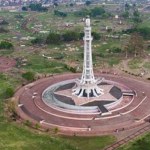Lahore The Punjab government has finalised the draft of the Mines and Minerals Act 2025, a landmark legal reform designed to transform the province’s mining sector and attract investment by aligning local governance with global standards.
Officials describe the proposed legislation as a cornerstone of Punjab’s natural resource strategy, aiming to create a transparent, competitive, and investor-friendly ecosystem for mineral exploration and mining operations. The draft is expected to be presented to the provincial cabinet for formal approval in the coming days.
At the heart of the Act is the institutional restructuring of the Directorate General of Mines and Minerals. Once approved, the Directorate will serve as the apex authority for all mineral resource administration in Punjab. It will be equipped with a dedicated Licensing Division, responsible for processing and issuing mineral titles, and an Exploration Promotion Division that will lead geological surveys, data acquisition, and investor outreach initiatives.
These divisions will be operationalised through formal notifications, with clear mandates, responsibilities, and administrative support to streamline processes and reduce red tape.
Read: MoU signed for exploration of rare earth minerals in Punjab
One of the most critical reforms under the 2025 Act is the introduction of the Mining Cadastre System — a geo-referenced digital registry of mineral rights. This system will be maintained by a newly appointed Director Geo-informatics and is expected to significantly reduce licensing disputes, prevent illegal mining, and ensure transparency in the allocation of mineral titles.
The cadastre will also be integrated with existing provincial databases, offering real-time visibility and traceability of mining activities across Punjab.
The Act mandates that all relevant district-level bodies — including the District Administration, Police, and other departments — extend full cooperation to the Directorate General in executing mining operations. To improve on-ground coordination, the law also calls for the establishment of District Mining Liaison Committees, which will facilitate communication between local authorities, communities, and mining stakeholders.
This district-level oversight is expected to make mining operations more accountable and community-inclusive.
The Act introduces a tiered licensing system to cater to both large-scale and small-scale mining operators.
For large-scale mining, the following sequence of licenses will apply:
- Reconnaissance Licence
- Exploration Licence
- Mineral Deposit Retention Licence
- Mining Lease
For small-scale mining, a simplified structure will be offered:
- Prospecting Licence
- Mining Lease (Small-scale)
All licenses will be granted by the newly structured Licensing Authority, operating under the Directorate General. Additionally, the Additional Director General will handle licensing for minor minerals — including bajri, sand, gravel, shingle, and sandstone — allowing for a more efficient and targeted administrative approach.
Read: Read: Gold deposits worth PKR 800 bn discovered in Attock, Punjab
With over 50 identified mineral types in Punjab — many of which remain underexplored — officials believe the 2025 Act could open the door to both local and international investment in the mining sector. The law provides clear mechanisms for legal recourse, digital transparency, and institutional coordination — all of which are seen as prerequisites for a modern mining economy.
If implemented as envisioned, the Act could position Punjab as a serious player in mineral extraction and processing, while ensuring that operations are environmentally responsible and socially inclusive.
The reform reflects Punjab’s broader push to leverage its natural resource base as part of the province’s economic development strategy for the next decade.







